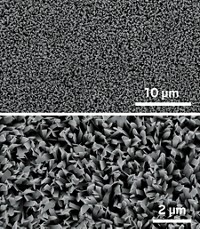Advertisement
Grab your lab coat. Let's get started
Welcome!
Welcome!
Create an account below to get 6 C&EN articles per month, receive newsletters and more - all free.
It seems this is your first time logging in online. Please enter the following information to continue.
As an ACS member you automatically get access to this site. All we need is few more details to create your reading experience.
Not you? Sign in with a different account.
Not you? Sign in with a different account.
ERROR 1
ERROR 1
ERROR 2
ERROR 2
ERROR 2
ERROR 2
ERROR 2
Password and Confirm password must match.
If you have an ACS member number, please enter it here so we can link this account to your membership. (optional)
ERROR 2
ACS values your privacy. By submitting your information, you are gaining access to C&EN and subscribing to our weekly newsletter. We use the information you provide to make your reading experience better, and we will never sell your data to third party members.
Environment
Fuel-cell muscles for RoboRambo
March 20, 2006
| A version of this story appeared in
Volume 84, Issue 12
A humanoid robot that fights in front of ordinary soldiers, takes bullets for them, and then downs a shot of diesel fuel to continue the fight is the wish-list item that Ray Baughman of the University of Texas at Dallas, Richardson, recalls from a 2004 discussion with John Main, a program manager with the Defense Advanced Research Projects Agency. Baughman hasn't delivered the battery-free robowarrior that Main had in mind, but he and 10 colleagues have devised two types of artificial muscles whose flexing components double as part of the fuel cell that powers them (Science 2006, 311, 1580). In one design, a strip made of platinum-coated carbon nanotubes remains straight until the fuel cell it is part of is switched off. That's when charge quickly builds on the nanotubes, which respond by flexing. The second prototype is based on shape-memory nickel-titanium wires coated with catalytic platinum particles. When the fuel-for example, a vapor of methanol-bathes the wire, a catalytic reaction generates heat, which triggers a reversible shape change in the alloy. In effect, these artificial robotic muscles work by breathing fuel rather than by drawing electricity from batteries.




Join the conversation
Contact the reporter
Submit a Letter to the Editor for publication
Engage with us on Twitter